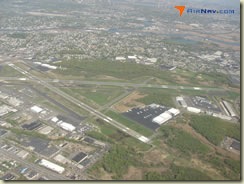Some odd things have been happening lately in the private aircraft fleets in the USA and Canada. The US fleet is shrinking as owners unload older light aircraft and many are exported, but in Canada the fleet is still growing and fairly quickly. The Canadian private civil fleet grew by 799 aircraft between July 2007 and July 2008, which is a growth rate of 3.2%. This is an enormous rate of growth, especially for economic times that can at best be described as "unsteady". This compares to a fleet gain of 597 aircraft in the period July 2006 - July 2007, which was 2.4% growth.
I got thinking about this recently because of a conversation I had with a pilot and aircraft owner. This person has a 1940s two seat certified taildragger for sale and it has been for sale for a number of years. He was mentioning that he has had quite a number of people come and look at it, but has had no offers at all. He was wondering what is going on, why it isn't selling. I have seen the aircraft and it is in nice shape. It has a recent finish on it and a recent engine overhaul as well. I asked him about the price he was asking. He indicted that he had just under $60,000 invested in it and had been asking just over $40,000 for it. More recently he had lowered the asking price to just under $40,000. A quick look around at the aircraft selling websites show that this year and model, in similar shape and with similar SMOH, are being advertised for US$18,000-$24,000, which is currently Cdn$18,900-$25,200. Those are "asking prices", too, not "getting" prices. Sellers will be settling for a couple of thousand less.
I mentioned to this pilot that his make and model are selling for these kinds of prices and his response was to indicate that he won't sell it for that little. He just walked away in disgust. I have been hearing this quite often in recent years.
So what is going on here and what does it mean in the larger picture?
Back in the 1990s, when there were no new light aircraft being built, used aircraft went up in value, way up. Flying magazine reported that light aircraft had appreciated an average of 12% per year for ten years at one point in the mid-1990s. This made them a great investment, better than the stock market in most cases. But it didn't last. A number of factors have brought values down, including new aircraft production, retiring baby boomers getting out of aircraft ownership, the weak US economy, the dramatic fall in the US dollar 2004-07 and high gas prices. It all adds up to the fact that, in Canadian dollars, many older aircraft have lost close to half their value since 2003.
That is just simple economics, but the rest is a bit more subjective. Many owners, like the pilot mentioned earlier, are not willing to sell their planes at a huge loss. They have put a lot into the aircraft and are not willing to let it go for a song. The result is that if you check the COPA classifieds there are lots and lots of aircraft for sale. Many have been for sale for a long time. A quick check of US classifieds show that the same aircraft, or better, can be bought in the USA for as little as half the asking prices in Canada. North America is one light aircraft market, they are easy to move and easy to import, so Canadians are buying in the USA instead of in Canada. This results in the record number of imports and the record numbers seen in the Canadian fleet.
But what about all those aircraft for sale? According to owners I have talked to, most of them aren't being flown much. The owners want to sell, but not for a loss and they don't want to run up the engine hours and decrease the value further while they are for sale. In the meantime high gas prices aren't helping and it seems that most are parked and not flying.
This means that the exploding Canadian fleet numbers aren't really indicative of the "flying fleet", but rather the "parked fleet". In fact, judging from fuel sale information, there are fewer aircraft flying fewer hours in Canada, not more.
So what can an owner who wants to sell an aircraft do? There are two possibilities:
1. Price the aircraft to the current US prices and accept that it has lost value while you owned it.
2. Hang onto it and hope that the US economy improves, gas prices go down, the baby boomers don't retire, the US dollar climbs against the looney and not too many new aircraft are built.
What if those factors don't reverse? Then it is very likely that used aircraft prices will continue to fall over the next few years.
What would that mean for the Canadian civil aircraft fleet numbers? Basically they will continue to climb as more and more aircraft are imported from the USA, as it has done so for the last four years. However it will continue to give a more and more distorted picture of actual flying in Canada as more owners decide to park, instead of sell, their aircraft.
What is the long term outlook? Because many owners won't sell at the large losses they face today and and because a large number of these unsold Canadian aircraft seem to be owned by older Canadians, it is likely that these parked aircraft will end up as "estate" problems for their heirs and executors to solve eventually.
 seen the online Flight Crew Briefing for Teterboro Airport, NJ (KTEB)? If not point you browser at http://www.airportflightcrewbriefing.com/teterboro/.
seen the online Flight Crew Briefing for Teterboro Airport, NJ (KTEB)? If not point you browser at http://www.airportflightcrewbriefing.com/teterboro/.